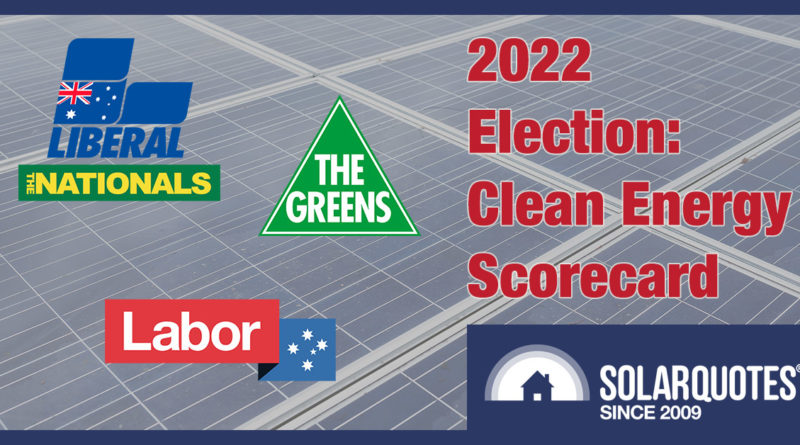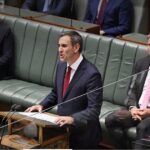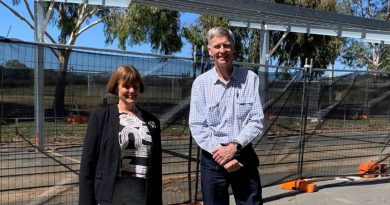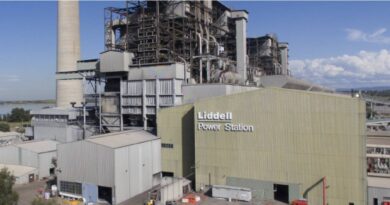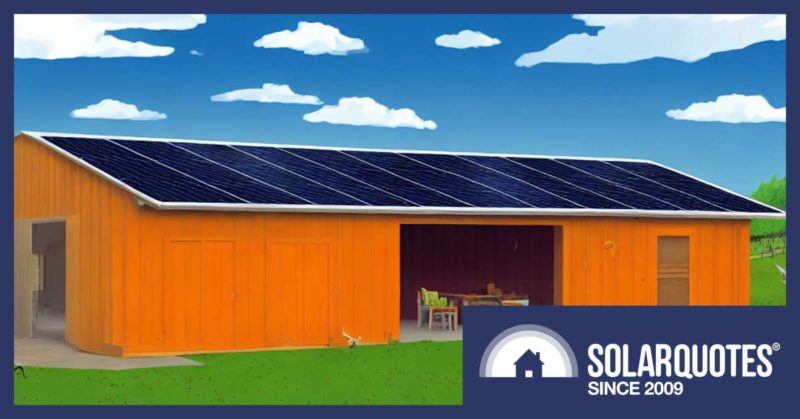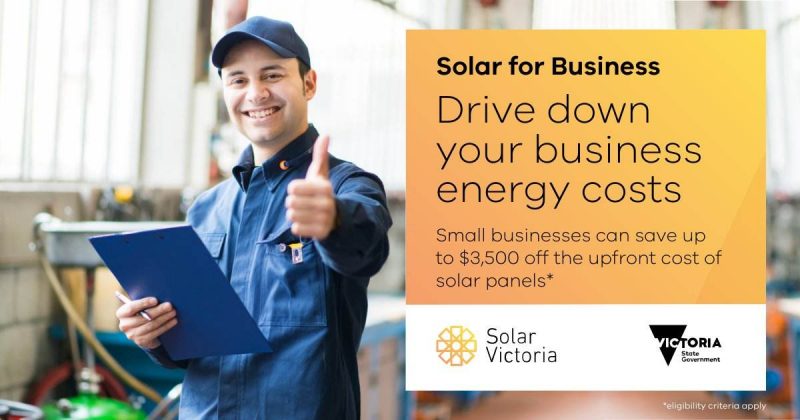Federal Election ’22: Clean Energy Scorecard, The Good, The Meh, & The Ugly
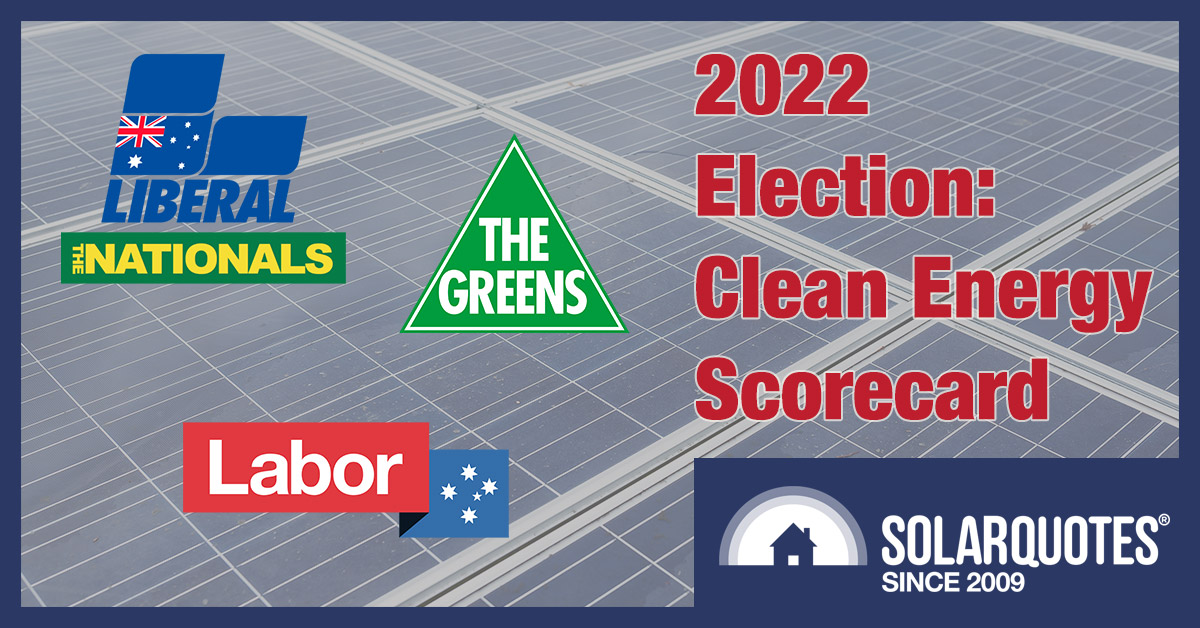

The federal election is only four weeks away, so I decided to make an in depth study of the environmental policies of all major political parties and rank them from best to worst:
- Greens
- Labor
- Coalition
That didn’t take long.
I’ll give details on their policies below, but if you think preserving the planet is important and you’re only deciding between the major parties, then I recommend giving the Greens your 1st preference, Labor your 2nd, and putting the Coalition below them.
There are also independent and minor party candidates, but the amount of effort required to outline all their environmental policies — if they even have any — exceeds my available time and motivation. But you can use sites such as Vote Climate One, which has ranked everyone on environmental policies from good to meh to bad.
Below I’ll provide the three major party’s positions on:
- Greenhouse gas emission reductions.
- Electric Vehicles (EVs).
- Home battery storage.
- Any other stand-out polices.
To learn the details, please read on. But I warn you — stop now if you can’t handle the revelation that politics is full of lying liars.
Global Warming Is Largest Issue
Of all the environmental problems the world faces, the most serious is global warming. It’s not that other issues, such as saving native forests, aren’t important. They’re just unlikely to survive the type of bushfire infernos we’ll see when 50+ degree heatwaves become common.
Putting the brakes on global warming by crashing greenhouse gas emissions is vital for protecting the environment as a whole, as well as ensuring the world can feed itself. In 2019 we hit 49.9 degrees in South Australia, so it’s not as if things aren’t hot enough already.
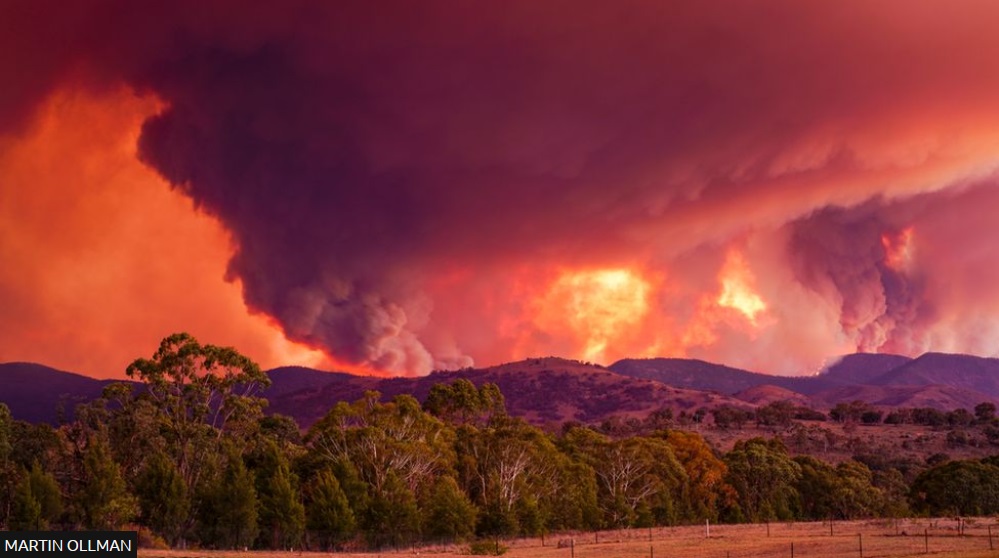
This image, taken during our disastrous 2019/20 bushfire season, is from this BBC news article.
2030 Emission Targets
It may upset some people to learn this, but I’m just going to come straight out and say it — political parties aren’t always 100% honest.
I realise many of you are reeling from shock right now, so if you need a minute to recover or throw up, that’s fine.
Because politicians aren’t always completely honest, promises on emission cuts for the year 2050 are not reliable compared to the ones they make for 2030. This is because they can promise the moon decades in the future, but then not bother to invest in a single moon capture device1. But 2030 is only eight years away, so it’s easy to see if they’re actually working towards their target for that year.
The emission cuts the three major parties promise for 2030 are:
- Greens: 75%
- Labor: 43%
- Coalition: 26-28%
These reductions are from 2005 emissions, which were 388 million tonnes of CO2 or its equivalent. In the 12 months leading up to March 2021 they were 20.8% lower than in 2005. This means the Coalition target for 2030 is absolute rubbish and can be met with a reduction of under 1 percentage point per year. The Coalition’s promise is less than what’s likely to occur even if they make no effort at all. The Coalition could even take steps to slow emission reductions and still meet their target.
When it comes to 2050, both the Greens and Labor promise zero net emissions. But, despite being 28 years away, the Coalition will only commit to an 85% cut by then. This is despite Scott Morrison saying on the 1st of February last year:
“Our goal is to reach net-zero emissions as soon as possible, and preferably by 2050.”
I guess it must be one of his non-core goals.
The Australian Greens
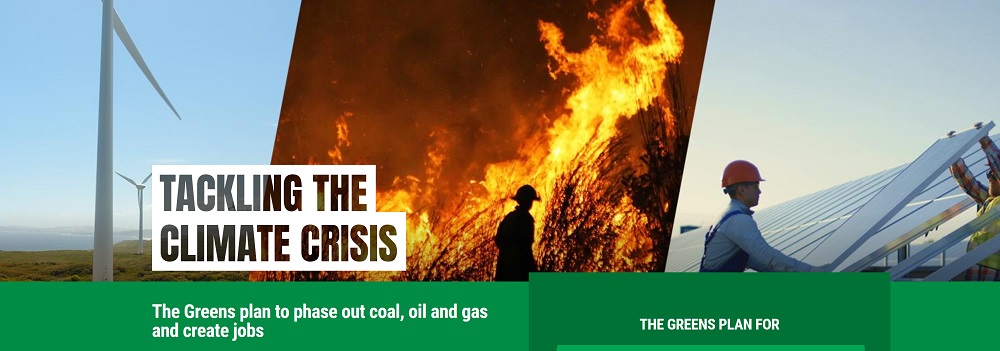

The Australian Greens are way ahead of the other two major parties on planned emission cuts and on other environmental issues. Of course, if they weren’t, it would mean they really picked the wrong colour.
The Greens & Emission Cuts
I mentioned the Greens want to cut greenhouse gas emissions 75% by 2030 and 100% by 2050, but that’s not quite true. They want Australia to be carbon negative before 2050 and draw down some of the CO2 we’ve emitted into the atmosphere over the past 223 years2.
Greens Will Reintroduce A Carbon Price
Cutting emissions 75% over the next 8 years is not a goal without any thought behind it. They have a plan and that’s to introduce a carbon price. Here’s a screen shot of what they say on their site:


A carbon price means companies emitting greenhouse gases into the atmosphere have to pay for some of the damage they cause3. We used to have one and it wasn’t a big deal, despite the fact Tony Abbott got his budgie smugglers in a twist over it.
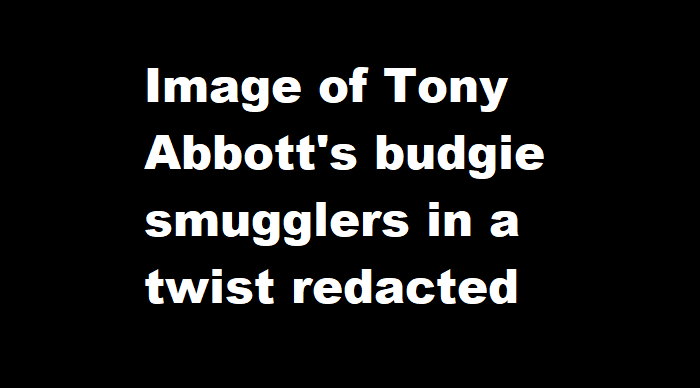

The important thing is, they have a method that will result in a 75% cut. They’re not pulling figures out of Adam Bandt’s arse. They will also apply a carbon levy to exports. This is something both other major parties are steering well clear of.
Greens To End Fossil Fuel Use
Steps the Greens will take to end emissions from fossil fuels include:
- No new coal mines.
- No new gas or oil wells.
- Use of coal in Australia to be phased out by 2030.
- Exports of thermal coal to end in 2030.
It’s definitely a good idea to make it clear no development of large new coal projects will be tolerated, so Adani (now called Bravus) will give up trying to open a new coal mine of disastrous proportions in Queensland. With a domestic carbon price and a carbon levy on fossil fuel exports, what happens on a smaller scale with coal, oil and gas extraction is less important, as it’s likely to soon become uneconomic.
Ending all thermal coal mining by 2030 will be easy thanks to the low and falling cost of renewable generation. Environmental and health benefits will outweigh any costs, but given the age of Australia’s coal power stations and how cheap solar energy generation and battery storage is likely to become, it may easily pay for itself without considering those benefits.
What the Greens don’t call for is ending metallurgical coal exports by 2030. This is hard black coal used in steel production. Because steel smelters last a long time and Australia is, by far, the world world’s largest exporter of this kind of coal, ending exports by 2030 could disrupt the world economy. But the Greens have a long term plan to deal with this and intend to spend half a billion dollars developing carbon neutral steel production capacity here in Australia.
Greens & Electric Vehicles
The Greens have big plans for EVs and will promote them in five main ways:
- Lower the cost of a new EV by up to $15,000 and provide “ultra cheap” finance for the remaining cost.
- Spend $2 billion on a publicly owned EV charging network.
- End the sale of new petrol and diesel vehicles by 2030.
- Introduce “tough” new vehicle pollution standards for cleaner air.
- Require all government car purchases to be electric from 2025 to help speed the transition and provide electric vehicles for the second hand market. But given the extremely long life of electric motors and how slowly EV batteries deteriorate, there may be no need for these government EVs to enter the second-hand market for a long time.
If all this is implemented, it will result in a rapid transition to electric road transport.
Electric vehicles are better for society than conventional cars because their environmental and health costs are much less and will continue to decline as our grid becomes cleaner. They also have much lower fuel and maintenance costs. As EVs continue to fall in price they will become cheaper overall than conventional cars. There are claims this point has already been passed in Europe.
I’m not a big fan of subsidising electric vehicles because it’s more economically efficient to put an upfront charge on the purchase price of conventional vehicles based on their expected emissions and health costs. But I probably won’t win many elections with that attitude.
I do think modest subsidies can be a good idea to encourage EV uptake that maximize the benefit they provide. For example, incentives could be provided to encourage EVs to have efficient onboard chargers and the ability to provide Vehicle to Home (V2H) and Vehicle to Grid (V2G) services.
The Greens also say they’ll encourage moving freight by rail rather than road to reduce emissions from heavy trucks. (This will reduce the road death toll and road repair costs.) They also say they will “clean up” truck fleets. Some consider heavy road transport a particular challenge for EVs, but I expect the fuel and maintenance advantages of electric trucks will rapidly drive diesel trucks out of the market.
Greens & Oz EV Manufacture
The Greens will also…
“Provide $1.2b to manufacturers of electric vehicles and electric vehicle components in Australia, building the Australian EV manufacturing industry.”
If people want to build electric vehicles in Australia, that’s fine with me. But I don’t see the benefit of providing funding to companies to build them here. While we shouldn’t get in the way of domestic EV manufacture, in real life giving funding to one industry reduces what’s available for others. There are manufacturers of many products in this country — including plenty related to clean energy — who probably think they deserve funding too.
Greens’ Other Transport Policies
Other transport initiatives of the Greens include:
- High speed rail from Melbourne to Brisbane. (Hey! Adelaide misses out! But I guess the Easties have to come first, since they’re too lazy to walk…)
- $25 billion into rail and bus
- $500 million a year into cycling and walking.
Greens & Batteries
The Greens will provide big subsidies for residential and small business battery storage.
Households will receive up to 50% off the cost of a system or $5,000. Whichever is lowest. Low interest loans of up to $10,000 will be available to cover the remaining cost.
For small businesses the subsidy will be up to $10,000 and the low interest loan can be up to $50,000.
While home and business batteries can assist the integration of renewable energy, subsidising them is an indirect way of reducing emissions. Because there will be a lot of battery storage on wheels under the Greens policies, we may be better off if they put effort into making sure EVs can support the grid. But I do think a modest battery subsidy encouraging Australians to install home batteries that can participate in VPPs (Virtual Power Plants) is likely to be useful.
The Greens also say they will create a publicly owned electricity retailer. Hopefully, this will provide VPP plans that return all the money they make above operating costs to households.
Greens & Gas
The Greens are the only major party to offer incentives for homes and small businesses to stop using gas. While ending all — or almost all — natural gas use is necessary to meet Labor’s 2050 net zero emissions target, the Greens are the only ones strongly committed to starting the process now.
They will provide grants to help pay for replacing gas fired boilers, water heaters, and stoves with electric equivalents.
For households, the grants can be up to $10,000; with the amount limited to 20% of the total cost or 50% if the household agrees to disconnect from gas within 6 months. They will also provide low interest loans of up to $20,000 to cover the rest of the cost.
For businesses, the grant can be up to $25,000 and the loan can be up to $100,000.
The Greens say they will also work with state and territory governments to ban gas connections for new housing developments.
Politicians Don’t Understand Trade
The Greens promise to…
“Use government investment to drive new export industries in green hydrogen and minerals processing, ensuring Australia becomes a renewable superpower.”
And they also say they will…
“Buy Local, Buy Green – make sure the government is buying products made by local workers produced with clean, green materials and power.”
These things are opposites.
The only way Australia can become a “renewable superpower” is by exporting clean energy and/or products produced using clean energy. The only point of exporting is to get imports in return. But if everything is made local and we buy everything local, then there is no point to becoming a renewable superpower. Not unless we want to export stuff for free.
While it may make us feel good to give other countries presents, if Japan is willing to trade us goods in return for green hydrogen or carbon neutral steel, we should take them. Japan is a rich country. They can afford it. If your goal is to be nice, you can take the stuff Japan is offering and give it to poor people.
But politicians who understand this point — or are willing admit they understand it4 — are rarer than hen’s teeth5.
The Australian Labor Party


The Australian Labor Party is well ahead of the Coalition on environmental issues, but far behind the Greens.
Labor & Emissions
Labor promises zero net emissions by 2050. The net part means any emissions will be cancelled out by drawing an equivalent amount of CO2 from the atmosphere and sequestering it.
They’ve promised a 43% cut in emissions by 2030. This will be from 2005 levels and because we’ve already achieved around 20%, this means Labor will cut emissions by under 3 percentage points per year over the next eight years to meet their target. In comparison, the Greens target is close to 7 percentage points per year.
The 43% cut is less than the 45% Labor promised in the 2019 election. Labor can claim the Coalition faffing around for three years has made a 45% emission cut harder to achieve. This is true, but doesn’t mean the urgency of situation has declined. There has been mounting evidence we need to rapidly cut emissions. Not just for future generations, but this one right here reading this right now. We’re already suffering significant negative effects from global roasting and they’ll only get worse without rapid action.
Labor’s Emission Cut Mechanism
Like the Greens, Labor has a mechanism that will ensure they meet their (lower) target. But instead of putting a price directly on carbon emissions, Labor will use the “Safeguard Mechanism“. In a nutshell, companies will be allowed to emit greenhouse gases at around their current level without penalty, but the amount they can legally emit will be gradually lowered to ensure Labor’s emission’s target is reached. If a company wants to emit more than it’s allowed to, it can purchase carbon credits6.
While this will work, unlike the Greens’ method it won’t raise any revenue for the government. Since Labor has already committed to future tax cuts the Coalition promised, this means they won’t have much tax revenue to do anything new, unless Australia’s economy does extremely well over the next few years7. But if government subsidized dental care is your worst nightmare, you may consider this a good thing.
Labor & Electric Vehicles
Labor says they will provide incentives for EVs below the luxury car tax threshold for fuel efficient vehicles. Currently, the threshold is $77,565. They will do this by removing…
- The Fringe Benefits tax for EVs: There is currently a 47% tax on cars provided through work for private use.
- Import tariff on EVs: A 5% tax on the import price of cars that aren’t from China, Japan, Malaysia, South Korea, Thailand, or the United States.
The removal of the Fringe Benefits tax won’t affect the typical private car purchase, but if Labor gets in I will definitely ask Finn to buy a SolarQuotes electric car for my personal use. If that doesn’t work, I’ll ask for an e-bike.
Eliminating the Fringe Benefits tax will significantly boost the number of EVs bought by companies. It will also increase the number of cars entering the second-hand market faster than other EV incentives. This is because there are plenty of dodgy people out there who will happily use their company’s money to buy a new electric car when the one they’re using is only a few years old.
Getting rid of the import tariff on EVs will slightly reduce the price of those that come from Europe and, technically, from places such as Africa, South America, India, Mexico, and Tonga. But they’re kind of thin on the ground at the moment. It’s a 5% tax on the import price of cars and because this comes before a number of other costs, it will only lower the price of a European EV by around 4%.
These EV incentives will start on the 1st of July 2022 and be reviewed after 3 years.
Labor says they will also look at improving charging infrastructure and otherwise promoting electric vehicles.
Labor & Batteries
Labor is not promising any subsidies to help households install batteries.
What they will do is spend $200 million to build 400 community batteries. These will have around 500 kilowatt-hours of storage each and be located in towns, suburbs, and cities. Labor says households will be able to store energy in them from their rooftop solar systems during the day and draw this energy at night.
I’ll definitely write in detail about if Labor wins, because it sounds really stupid to me. Installing batteries of around this size in the right locations can be very useful for supporting the grid and avoiding expensive transmission upgrades. But they should just be used to directly lower electricity prices for everyone.
Letting people participate in a scheme where they supposedly can put energy in and take it out again will not improve their operation. It will raise costs because the virtual battery scheme will require money to set up and run. There’s no need to complicate people’s lives by having them participate in Tamagotchi like busy work. As Australians become richer and electricity becomes cheaper, we should be thinking less about it, not more.

Tamagotchi (Literal translation: Egg crack dispenser) were like electronic crack for children in the early 90s, up until Nintendo developed real crack for children with Pokemon.
I expect in practice, the virtual battery will be entirely virtual. That is, fake. While the batteries will be there and will work to support the grid, in actual operation there will be no direct link to what people think they are putting in and taking out. This would make the Community Batteries scheme a government supported con job.
If they are installing 400 batteries that average 500 kilowatt-hours of storage each for $200 million, it comes to $1,000 per kilowatt-hour. That’s pricey for grid batteries, so the price may already include the cost of running the virtual battery scheme.
While Labor claims “households” will be able to use the batteries, 400 batteries with 500 kilowatt-hours of storage each only comes to 20 watt-hours of storage per Australian household. That’s enough to run an Xbox for about 12 minutes. (And only if it’s not running hot enough to cook your breakfast on top of it.)
Anyway, I’m going to force myself to stop complaining now, because I put $2,000 down on Labor winning yesterday and I’m probably not improving my chances of getting a payout.
Labor’s Other Initiatives
Labor says it will “invest” $20 billion in improving electricity transmission. I put the word “invest” inside inverted commas, as it’s not currently clear what that means or where the money will come from. Labor says they will also make $3 billion available for various projects that include “clean” metals and hydrogen production. (I’m pretty certain “clean” means carbon neutral and not “well polished”.)
Labor Overview
Labor’s environmental promises are less impressive than they were for the previous election. They seem to have decided they lost the last one because they promised to make things better, so they’re doing their best to avoid that this time and are relying on winning by simply not being the Coalition.
I find this morally reprehensible given the environmental threats the world faces, but I’ll take “not doing as much as they should” over doing “bugger all”, which is the approach of another major party whose name I won’t mention… until I start a new paragraph.
The Liberal-National Coalition
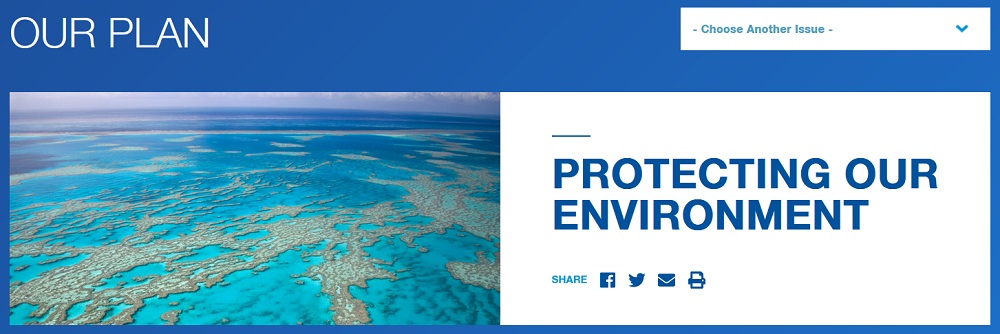
I get the impression the Coalition definitely want you to go to the upper right and “Choose Another Issue”. If they get their way you won’t see any tropical coral reefs in the future.
The Liberal-National Coalition isn’t planning on doing much when it comes to the environment. Sure, they’re not specifically planning to destroy it, but they’re in no hurry to do anything about the destruction that’s currently occurring. Despite this, they haven’t been recalcitrant when it comes to claiming credit for emission reductions that have occurred, despite directly opposing every major policy that contributed to these reductions over the past 13 years.
The Coalition & Emissions
Since 2005, Australia’s greenhouse gas emissions have fallen by around 20% for the following reasons:
- Improved energy efficiency.
- The falling cost of large scale renewable generation in the form of solar and wind farms.
- Various government programs that supported efficiency and renewable generation.
- The growth of rooftop solar power. This is a big one — over the past 12 months it supplied 8.8% of Australia’s electricity consumption and 16.7% in South Australia.
The Coalition has at times, and to varying degrees, opposed the first three. They were against the introduction of fuel efficiency standards, eliminated Australia’s carbon trading scheme, reduced the Renewable Energy Target.
There were individuals in the Coalition government who wanted to axe the SRES or Small-scale Renewable Energy Scheme that reduces the cost of rooftop solar8. But thankfully that never happened.
They mention the 20% reduction in emissions that has occurred since 2005 and state…
“We are on track to meet and beat our 2030 Paris target, with latest projections showing a 30-35% reduction.”
You might think if that’s what we’re on track for, they’d be happy with an emission reduction target of at least 30% for 2030, but they’re going to stick to 26-28%, which is the minimum allowed by our Paris Accord commitment. But there is no mention of their actual emissions target on the page promoting their environmental policies. It’s very clear they’re aware Australians expect their government to take action on climate change and are making every effort to hide the fact they are doing as close to bugger all as they believe they can get away with.
Coalition & Electric Vehicles
The Coalition is not offering incentives for EVs.
Coalition & Batteries
If you want to install a battery in your home, the Coalition isn’t going to come around to your place and stop you. But they’re not going to help you.
Coalition & Other Environmental Issues
The Coalition says they’ll spend a considerable amount of money on protecting koalas, establishing marine parks, and protecting sea grass and the Great Barrier Reef. I’m in favor of all those things but, unless we reduce global warming, koalas are likely to go extinct in the wild, sea grass and many forms of marine life will also be endangered, and the Great Barrier Reef as we know it will be destroyed.
Protecting natural habitats in the short term is good, but it’s insufficient. It’s also necessary to fight global warming, otherwise it’s like spending money redecorating a house that’s on fire.

“I’m melting!” This Earth Day Google Doodle shows glacier retreat in Greenland over a 20 year period.
Voting For The Environment
It’s up to individuals to vote for who they think will be best for the country — and I’ll ask all individuals reading this to put a lot of weight on the environment when it comes to penciling in your preferences this election.
There will be time in the future to improve tax policy or perfect the rules for stuff like negative fringe benefit gearing, or whatever you’re intensely interested in that I don’t care about. But only if we don’t cause irreparable harm to the planet. If we allow too much warming, we may find ourselves preoccupied with fixing problems it causes and become distracted from making the world a better place.
If there’s no independent or minor party member on your ballot with better environmental policies than the Greens or Labor, then to maximize the environmental benefit of your vote, I recommend putting Greens as your 1st preference and Labor 2nd.
The Greens have no realistic chance of forming a majority government, but the more first preferences they receive, the more other parties will be persuaded to improve their environmental policies next election. It will also deprive other parties of the $2.91 in election funding each first preference vote receives, and that will really piss them off.
Even if you don’t like the Green’s other policies, they are not going to have the chance to form a government and implement them all, so you can safely give them your 1st preference for their environmental stance.
The reason why I recommend putting Labor second is to maximize the chance of the Coalition being kicked out, as the Coal-licking party are not good for the environment. They should also feel ashamed for pretending they are. I realize feeling shame may be a strange new experience for some of them, but I think it could help them grow as human beings.
They may even come to realize that, while we are carbon based lifeforms, the peculiar arrangements of hydrogen, oxygen, nitrogen, and other elements that are also inside us make us more important than coal.
Footnotes
- But do you really want the moon after Americans have pooped on it? ↩
- We began mining coal back in 1799 and first exported coal — 150 tonnes to India — in 1801 ↩
- Some estimates put the cost of CO2 emissions at over $600 per tonne of carbon, but the practical upper limit for a carbon price is what it costs to remove a tonne of carbon from the atmosphere. I expect this will be under $100 Australian per tonne. (That comes to under $27 per tonne of CO2, since it’s 73% oxygen by mass.) ↩
- Senator Matt Canavan has a degree in economics, as hard as that may be to believe. ↩
- Which shouldn’t be that rare, since every hen starts off with one. ↩
- Presumably honest carbon credits after the current Coalition carbon credit capers are resolved. ↩
- Or inflation is very high. That would help raise revenue from bracket creep. (Bracket Creep is also my pet name for my accountant.) ↩
- The ACCC recommended scrapping the ‘solar rebate’ in 2018 – A scheme that’s already being gradually phased out. ↩
Original Source: https://www.solarquotes.com.au/blog/2022-election-clean-energy/

